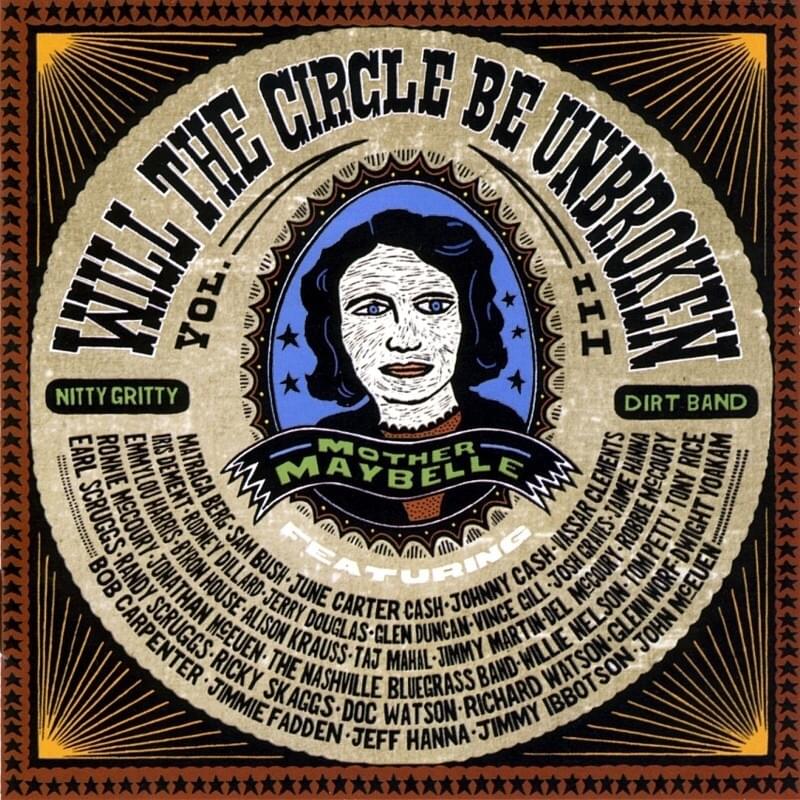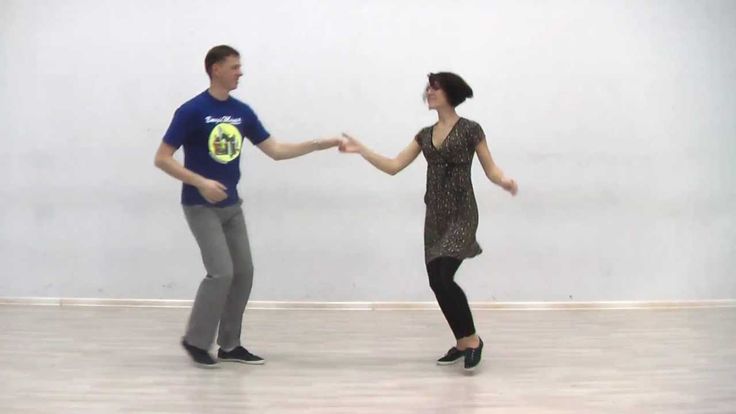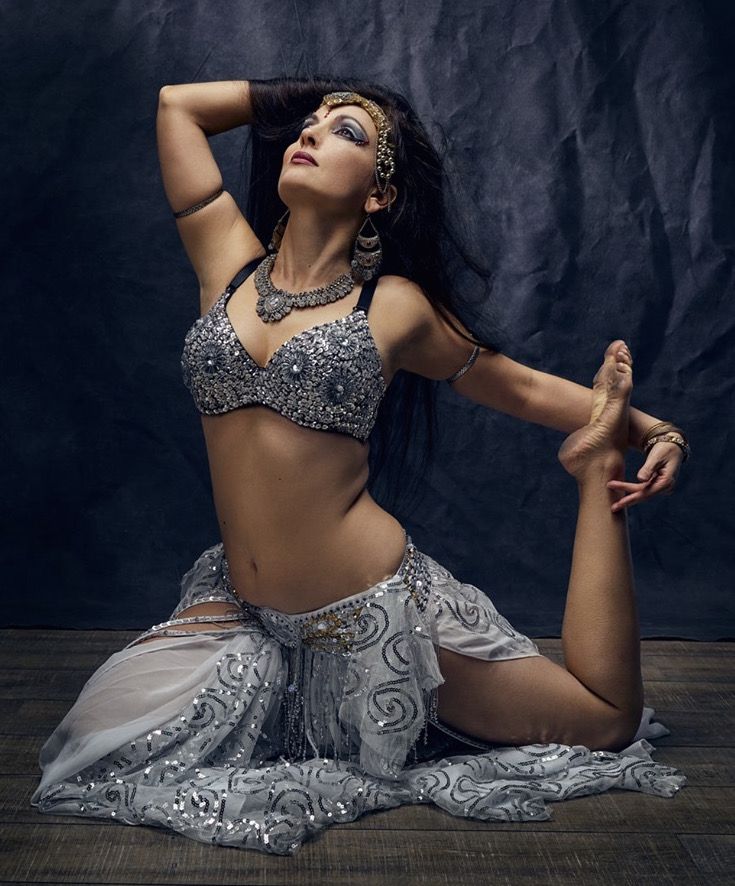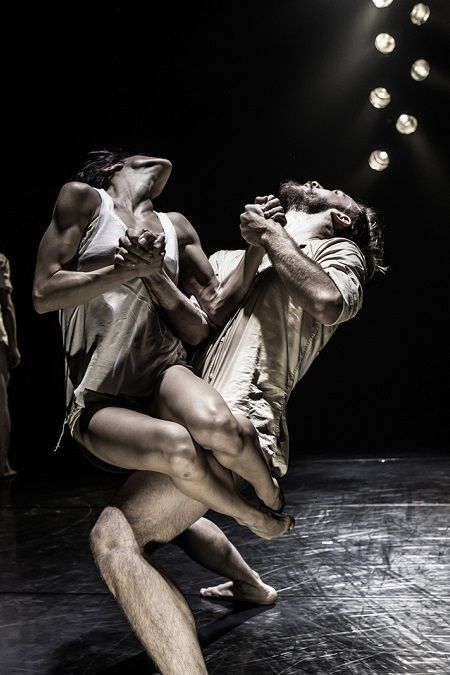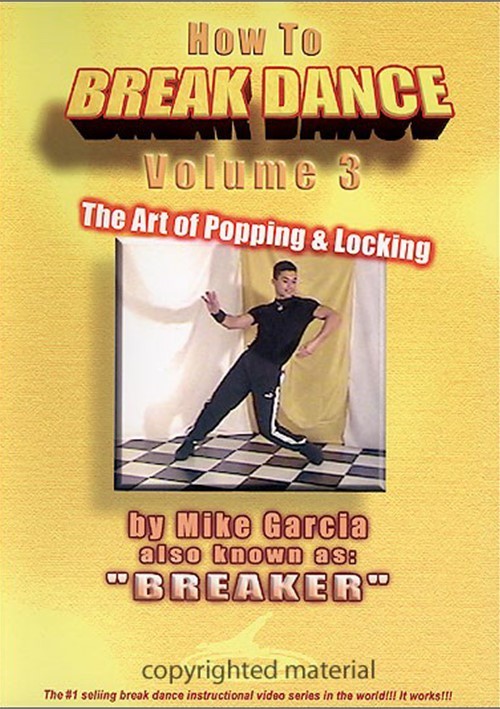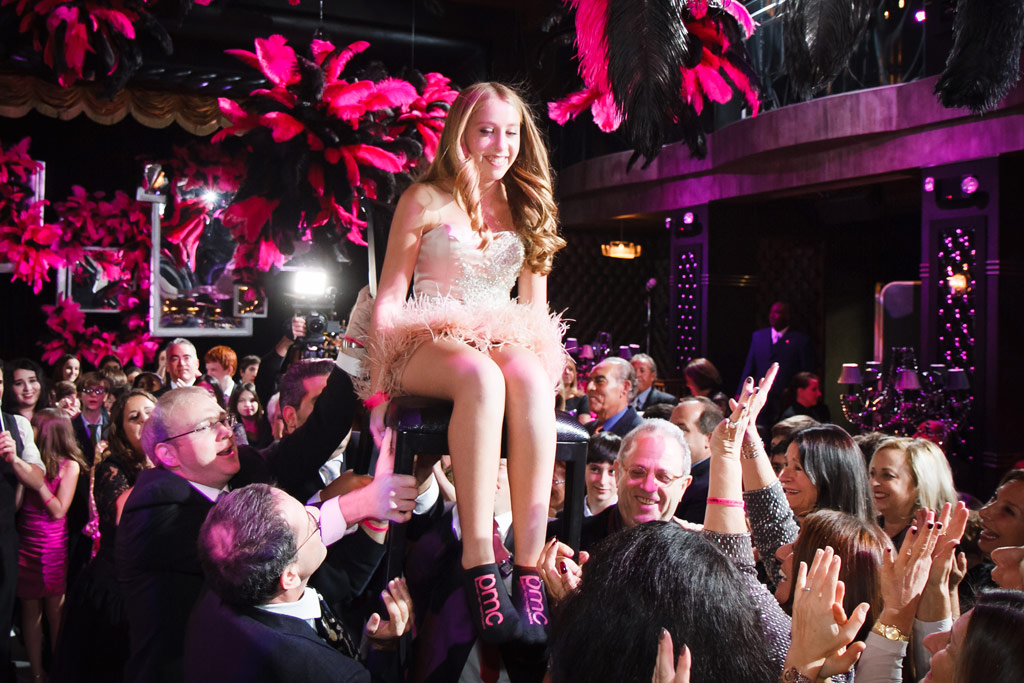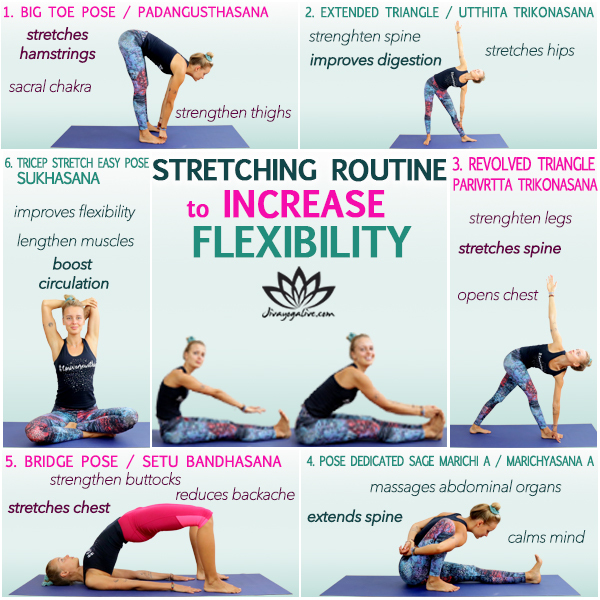How to make your dance moves clean
How To Be A Cleaner Dancer
Are you trying to be a cleaner dancer? We can help! While dance is a form of expression and not a military drill, being clean allows others to see and understand your movements better. And having a good understanding of your execution will help you feel free-er and more expressive! Here are some tips that will help you be a cleaner dancer.
1. Developing body awareness
To be a clean dancer, you must develop a sense of awareness so that you are able to mimic the pictures of the choreographers or those around you. At any given time, you should know where each body part is placed, down to your fingertips. It’s always a good idea to take a step back and notice what your body is doing in relation to what you want it to do. Are your toes pointing in or out? Fingers together or spread apart? Shoulders tensed or relaxed? Take a look in the mirror and try to match the choreographer or fine-tune what picture you want to make.
Practice with: The Ultimate Guide To Body Awareness For Beginner Dancers
2. Knowing your basic anglesThere are certain body angles and positions that'll help you to memorize know because they are used often. As you take more classes (especially foundational styles and beginner classes), hitting these angles will become second nature. If you’re newer to dancing, then drill the basic angles into your body so that it won't be something you consciously have to pay attention to all the time. Here are more reasons Why Every Dancer Should Take A Beginner Dance Class
For example, 45 and 90 degree angles are always used, so get that into your system ASAP. This will let you to focus on other details that make up the move. And come cleaning time, you won't have to be cleaned as often because you already have a handle on the base of the moves.
Trying to clean a large group? Directors, this is How To Clean Your Dance Team
3. Using your musclesIf your arms or any other body parts are floppy, then you’re going to look messy. So use your muscles! You should think of them as brakes for your movement that’ll let you freeze at a moment’s notice. Tense up at the RIGHT moments to stick your pictures. I’ve done exercises where I go through any pictures in a piece and flex my body at those points to try to develop muscle memory for each picture. The more developed your muscles are, the better you will be at controlling your movement.
Not sure how to practice? Use these tips: Wanna Dance With More CONTROL?
4. Defining your path of movementTo be a cleaner dancer, it’s critical that you think about the pathway of the movements. When you look for directions on Google Maps, it’ll show you different ways from getting from point A to point B.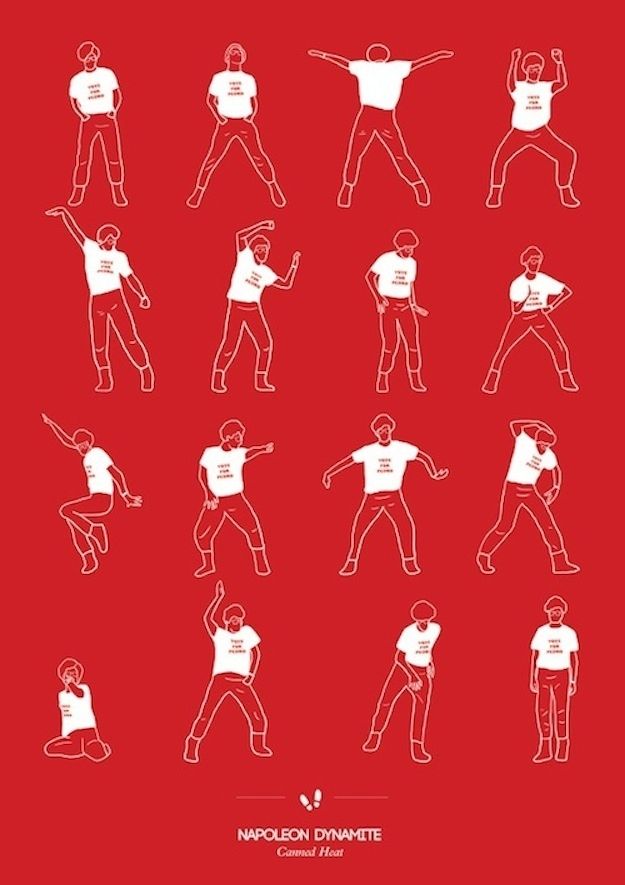 Yes, you’ll get to where you want to go in the end, but all these pathways look SUPER different.So when you’re learning choreography and don't feel like you're doing it right, take a look at the path of your moves.
Yes, you’ll get to where you want to go in the end, but all these pathways look SUPER different.So when you’re learning choreography and don't feel like you're doing it right, take a look at the path of your moves.
Mastering timing will help your cleanliness like crazy. Being able to move slow and take your time AND being able to move crazy fast can only translate well if you're doing it cleanly. And if you can’t do the moves properly at 1/10th of the speed, then there’s no way you can do it right in tempo. So start slow, first. I like to take a piece and go through it a couple times really slowly, so I can really get the pictures right and understand how it feels in my body. Then I speed it up in increments until I can do it in tempo. This is especially helpful before you cast or do groups in class.If you want to take it a step further, then learn some popping animation fundamentals!
Poppers have some of the craziest speed control.-Step-18.jpg/aid1640374-v4-728px-Shuffle-(Dance-Move)-Step-18.jpg) Learn to dance on top of the music: How To Train Your Musicality As A Dancer
Learn to dance on top of the music: How To Train Your Musicality As A Dancer
When you’re doing choreography or other hip hop styles, you want to be really grounded in your movements so that you’re not toppling over while you’re dancing. You can’t have a strong tree without strong roots – and your feet and legs are the ones anchoring you to the floor as you’re dancing.If you’re going to be wobbling while you’re trying to move around, then it’s likely that you won’t be able to do any of the other moves 100% correctly.
"Don’t skip leg day," they say – and the same goes for dancing. Stay grounded and balanced to better execute your moves! Read about Why "Staying Light On Your Feet" Is Actually Bad Advice Taking classes on STEEZY Studio is the perfect way to polish your cleanliness. Choreographers not only teach each move in thorough detail, you get to practice each combo or section as many times as you need. Watch this video for more tips on dancing clean!
Watch this video for more tips on dancing clean!
Sign up today to start for free! Do you have any activities your practice to help with cleanliness? Share them with the community by commenting below!
How to make your dance moves look cleaner | by Jason Pu
Ever wonder how your favorite dancer moves so cleanly?
Whether you’re doing ballroom or breaking, cleanliness is king. Precise execution is a hallmark of contemporary hip hop in particular — think Lyle Beniga or Les Twins. These dancers have spent countless hours refining their motor skills to achieve razor-sharp movement.
Luckily, you don’t have to be a pro to level up these skills.
Making your moves cleaner is all about muscle memory. It’s defined as “the ability to repeat a specific muscular movement with improved efficiency and accuracy that is acquired through practice and repetition” (Merriam Webster).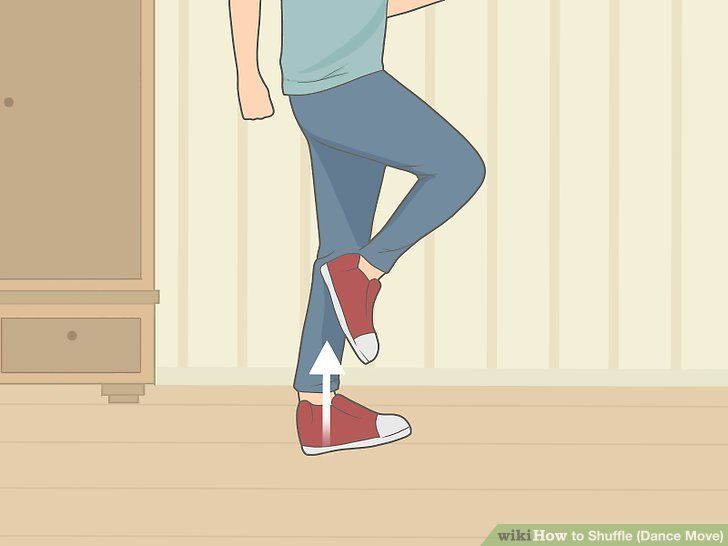 When you properly set a dance move into your muscle memory, it comes out right without thinking twice.
When you properly set a dance move into your muscle memory, it comes out right without thinking twice.
Despite the name, muscle memory happens in the brain. There are two steps to the process: a memory encoding stage, and a memory consolidation stage. In other words, you learn by doing, then let your brain do its thing. Completing this process again and again will have your repertoire looking squeaky clean.
Step 1: Memory encoding
When cleaning a dance move, your job is to teach your brain the information that will eventually turn into instinct. The key word here is “conscious.” Be aware of your body: what it’s doing, how it feels, and the resulting visual.
Below is a general breakdown of “teaching your brain”, assuming you can already perform the technique you want to polish.
- Be aware of what your body is doing. That means each and every body part, from your face to your pinky toe. How engaged is your core? Which body parts are supporting more weight? Don’t worry about how it looks at this stage.
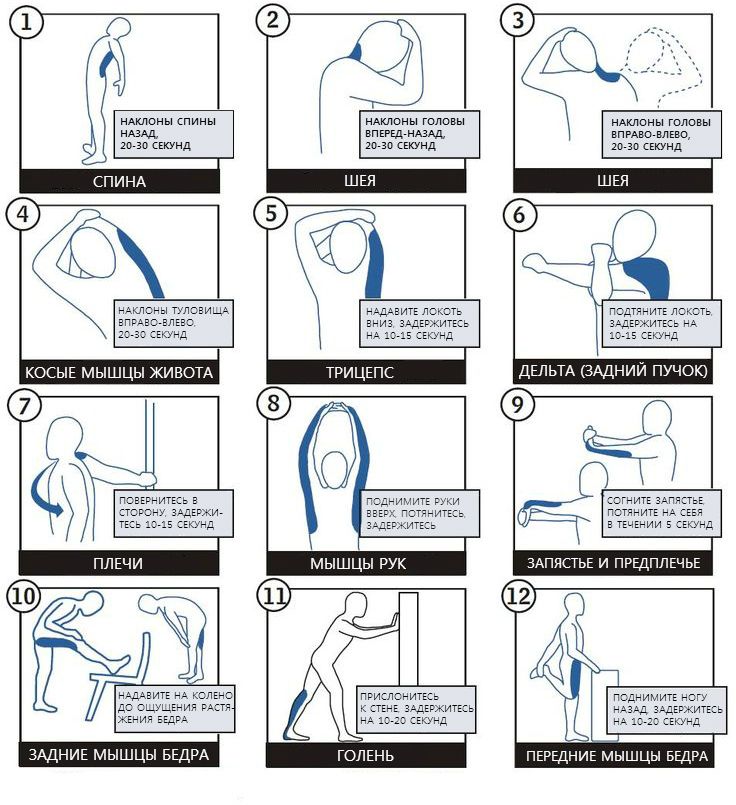 Focus on what your body parts are doing separately and as a whole to perform the motion.
Focus on what your body parts are doing separately and as a whole to perform the motion. - Be aware of how your body feels. Again, this means the individual parts as well as the whole. Remember the stretch you feel in your left calf, the lightness of your ribcage. If anatomy isn’t your thing, think of an image like “rubber band,” “feather,” or anything that helps you retain the feeling.
- Be aware of the resulting visual. You can use mirrors, video recording, or a companion to help you adjust your actions until the outcome is to your liking. If you’re learning a technique from someone else, use them (or a video) as a reference.
Chances are, you won’t be completely happy after the first run-through. No worries — start again and adjust accordingly. It’s good to go slowly and thoroughly, so that your brain consciously absorbs all the information that you’re encoding to memory.
Source: Wikipedia, “Memory consolidation.”Step 2: Memory consolidation
The second part of muscle memory happens when you’re not training. In the downtime, your brain redistributes information and forms new pathways between its regions. So get enough sleep, eat healthy, and do what you can to make your brain’s job easier.
In the downtime, your brain redistributes information and forms new pathways between its regions. So get enough sleep, eat healthy, and do what you can to make your brain’s job easier.
Before you know it, your moves will be as clean as a whistle, and they'll be more effortless too. If it’s not working, or you want to make adjustments, simply return to the conscious encoding stage.
Let me know if this helps you practice more effectively or if there’s something I missed. Also, if you’re interested in learning more about muscle memory and the science behind it, this TED-Ed video is a good place to start.
As always, feel free to reach out if you have any questions or feedback; I’m on Instagram @glissando. If you liked the article, I’d be grateful if you shared it or clicked that clap button. Thanks for reading — peace!
7 tips for those who want to learn how to dance
September 9, 2020 Reno5 Life
Dancing is a great way to make friends with your body and gain self-confidence. And yes, they can be mastered at any age.
And yes, they can be mastered at any age.
1. Choose your style
The idea here is the same as for sports: if you secretly hate yoga or iron exercises, you are unlikely to go to workouts week after week. To achieve noticeable progress in dancing, a beginner will have to practice a lot and regularly, so it’s better not to torture yourself and choose a direction that really ignites.
You can focus on the music that you like - you need to catch the drive from movements to it. It is music that forms the style of dance and its energy, so decide what is closer to you: for example, funk lovers should try popping or locking, folk fans may like Irish dancing, and if you respect jazz, swing and everything like that, take a closer look at lindy hop.
Another criterion is the nature of the movements. Some are closer to dynamic, as in hip-hop, others are smooth and sensual - for this in tango. There are also health restrictions to consider. So, twerk is not suitable if there are problems with the lumbar spine, with sore knees it is better not to get involved in shuffle, and it will be difficult for an aged person to master house.
2. Set a goal
Photo: Iakov Filimonov / ShutterstockYou can start dancing at any age, but it's important to keep in mind why you started it in the first place. It is perhaps too bold to expect that in half a year of classes it will be possible to reach the level of international dance championships from scratch. But if you want to try dancing in order to develop plasticity and learn to feel the body better, great, go ahead.
Don't expect everything to work out the first time. When you learn from scratch, difficulties are absolutely normal, the main thing is not to score in classes. Over time, both the correct posture and a beautiful gait will be developed, and as a bonus you will also get self-confidence - with freedom of movement, freedom from complexes will come.
3. Don't give up on sports
Some dances in themselves make for a good workout. A vigorous shuffle will replace cardio, and a break can give a load to almost all muscle groups. And yet, without preparation, it will not be easy.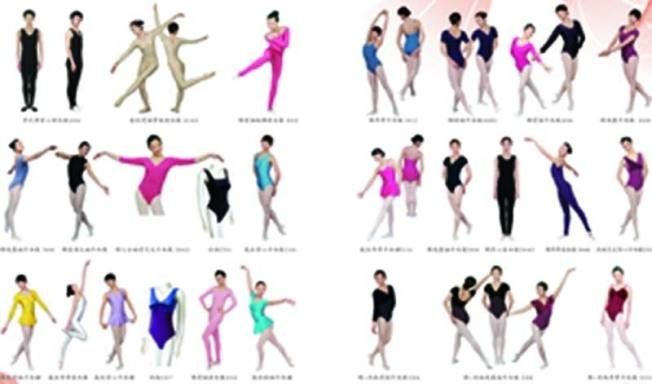 A more or less good stretch is needed in any type of dance, and, for example, strong arms and strong abdominal and back muscles are also useful for pole dancing. You can combine dancing with strength exercises, but you need to give the body time to recover and not plan classes in a row, but allocate at least a day of rest between them.
A more or less good stretch is needed in any type of dance, and, for example, strong arms and strong abdominal and back muscles are also useful for pole dancing. You can combine dancing with strength exercises, but you need to give the body time to recover and not plan classes in a row, but allocate at least a day of rest between them.
And don't forget to warm up before dancing. So that the training does not end with an injury, the muscles and joints need to be prepared for the load. You can allocate 10–15 minutes for a warm-up, it should include simple articular gymnastics (at least elementary rotational movements of the shoulders and knees), tilts and dynamic stretching.
4. Take some lessons from a trainer
Especially if you have never danced before. Those with experience can learn new styles at home with video tutorials, but that's because they already know how to control their bodies. Beginners are unlikely to succeed, but disappointment in themselves and demotivation are guaranteed - if you can’t repeat elementary movements, then there’s no point in doing it.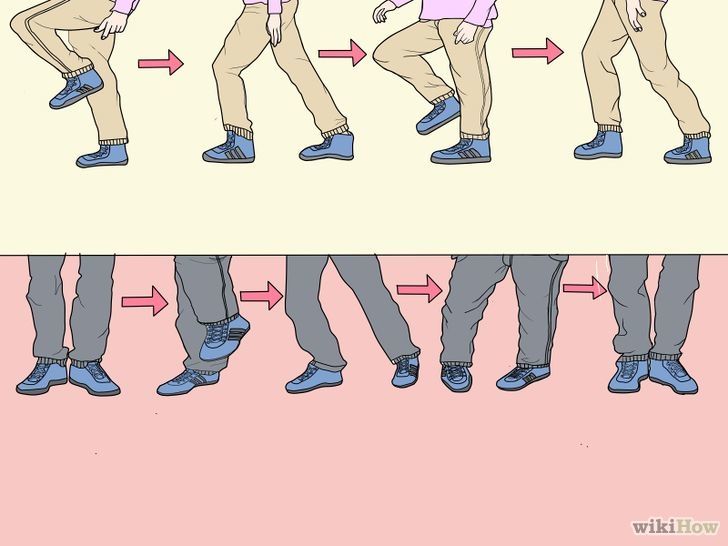
Nothing really strange here. Without preparation, it is difficult to just take it and start moving freely. At least the basic elements are better to master under the guidance of a pro, and when you feel that you are coping, supplement these lessons with home workouts.
5. Learn something new in every class
When you repeat the same set of exercises and movements over and over again, classes turn into a good way to pass your free time, only you can forget about progress. Acquaintance with new elements is the same mandatory part of any workout as a warm-up. It doesn't matter if you work with a mentor or on your own.
Do not immediately try to copy cool dancers. First, study the basic movements, then try to combine them into bundles until you hone them to automatism, and then experiment and improvise, creating something new based on familiar elements.
6. Record yourself on video
It is not necessary to record the entire workout from the warm-up, it is enough to record only those moments with which you have problems.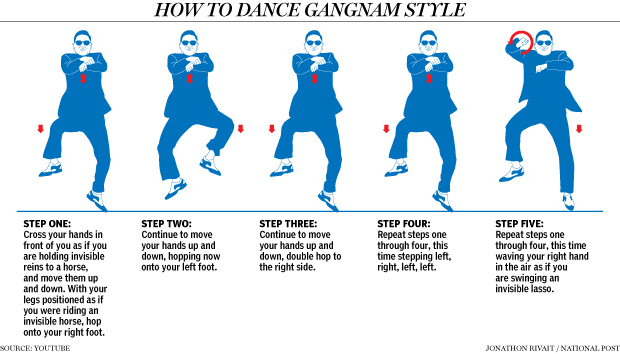 These can be separate movements or bundles that are not given in any way. Review the video and, if possible, objectively assess what is wrong: perhaps there are technical problems that are difficult to notice in the process. When you understand what's wrong, try to repeat the movement and record it on video again - and so on until you achieve a good result.
These can be separate movements or bundles that are not given in any way. Review the video and, if possible, objectively assess what is wrong: perhaps there are technical problems that are difficult to notice in the process. When you understand what's wrong, try to repeat the movement and record it on video again - and so on until you achieve a good result.
This approach will help you find errors and track progress. You can not even limit yourself to memorized ligaments, but improvise - then see how it looks from the outside.
7. Find like-minded people
Photo: Iakov Filimonov / ShutterstockIf you need an extra reason not to miss classes, then meeting new people can be a good motivation. It is easier here for those who train in a group. Often the dance school becomes the center of a close-knit community, where people come not only for the sake of classes, but also just to spend time together at dance parties.
Finally, the more partners around, the more experience.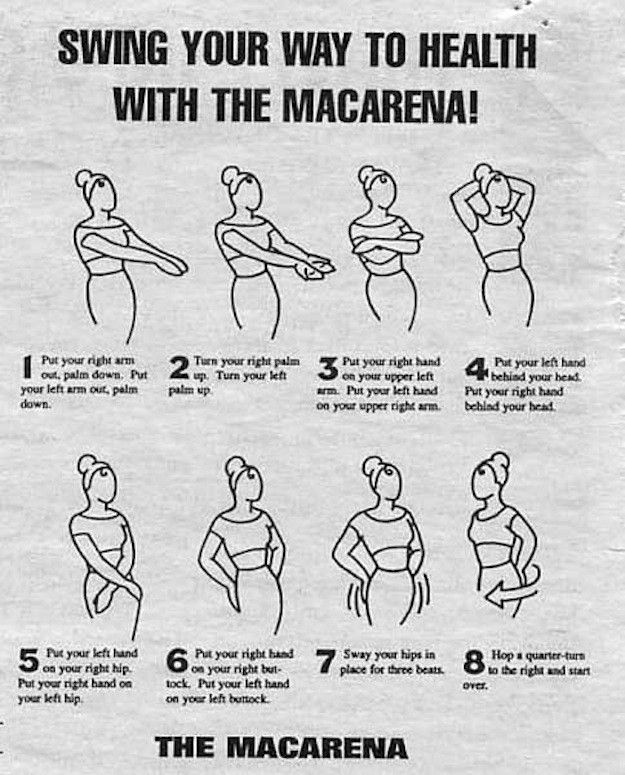 Do not limit yourself to dancers of your level of training and practice with those who are stronger or weaker than you. In the first case, you can improve your skills, and in the second, you will try yourself as a coach - this, by the way, is a good way to learn to take more initiative and understand the very principle of movement in dance, and not just memorize the alternation of chords.
Do not limit yourself to dancers of your level of training and practice with those who are stronger or weaker than you. In the first case, you can improve your skills, and in the second, you will try yourself as a coach - this, by the way, is a good way to learn to take more initiative and understand the very principle of movement in dance, and not just memorize the alternation of chords.
Stay fit and connected with the OPPO Watch. They have two powerful processors, a bright AMOLED display, 1 GB of RAM and 8 GB of internal memory, Bluetooth, Wi-Fi and NFC modules. And more than 90 training modes, including those designed specifically for ORRO. Work out cooler with music, you can listen to it in streaming services or download tracks to the memory of your watch.
If you want to enjoy clear sound, the OPPO ENCO W31 Wireless Headphones are for you. Two-level noise reduction system, easy operation and stable connection will make listening to music and talking on the phone as comfortable as possible.
Read also 🧐
- How to learn how to dance the shuffle
- How to learn street dancing without leaving your home
- Zumba is a fun way to lose weight for those who love dancing
12 Life hacks to quickly learn how to dance from Mamita Dance
Dancing
Author: Pavel Collect
Psychologist, Teacher of Salsa and Tango
Dances
Author: Pavel Pavel Pavel Pavel Pavel, Psychologist, Teacher of Salsa and Tango
At the start, you always want to get a quick result. When it doesn't happen, the hypothesis arises that everything takes time. After a conditionally acceptable time, humility comes to mastering pair dances, which, perhaps, is not given, and I will just do what I learned somehow.
This is the most common story of those who believe that the mere act of attending a pair dance class is enough to learn how to dance.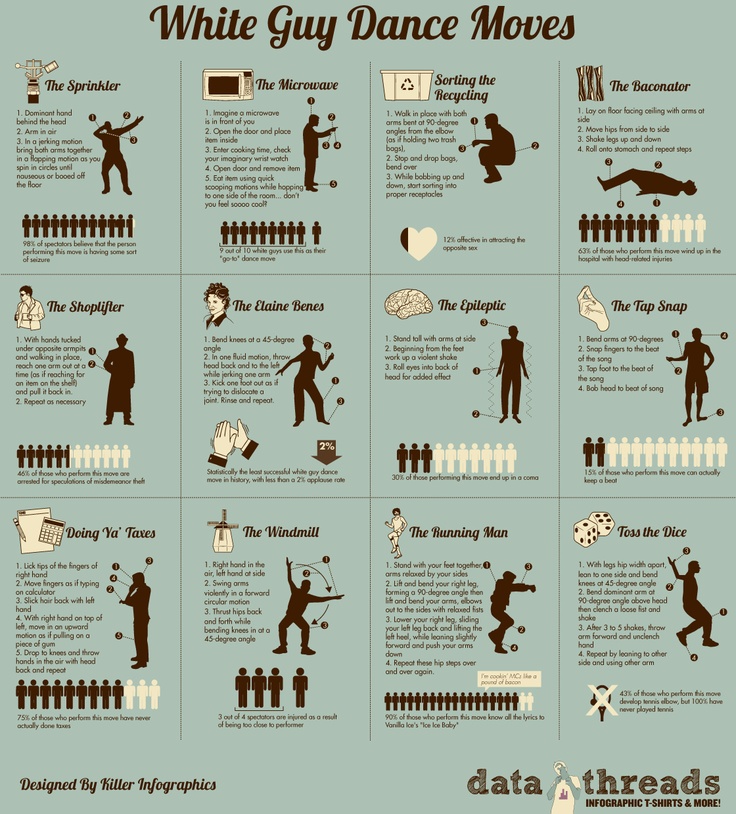
Absolutely not. If you want to really dance well, you have to make an effort outside of the dance class. A good teacher will definitely be needed, but the initiative should be on your side.
1. Listen to music
The most common and accessible advice that is given already in the first lessons. And it definitely works. Music creates a certain atmosphere of the dance and intuitively you want to move to it. It doesn't matter where you listen to music - in the car, on headphones while walking or doing household chores.
An addition that will help you dance better is your active participation in the music. Sing along, dance or simply beat musical accents with any free parts of the body. In the subway, for example, it is enough to tap out bright moments with your fingers, in the car to sing along with sounds, and at home you can jump for pleasure.
2. Watch videos of good dancers
It's complicated, but also obvious.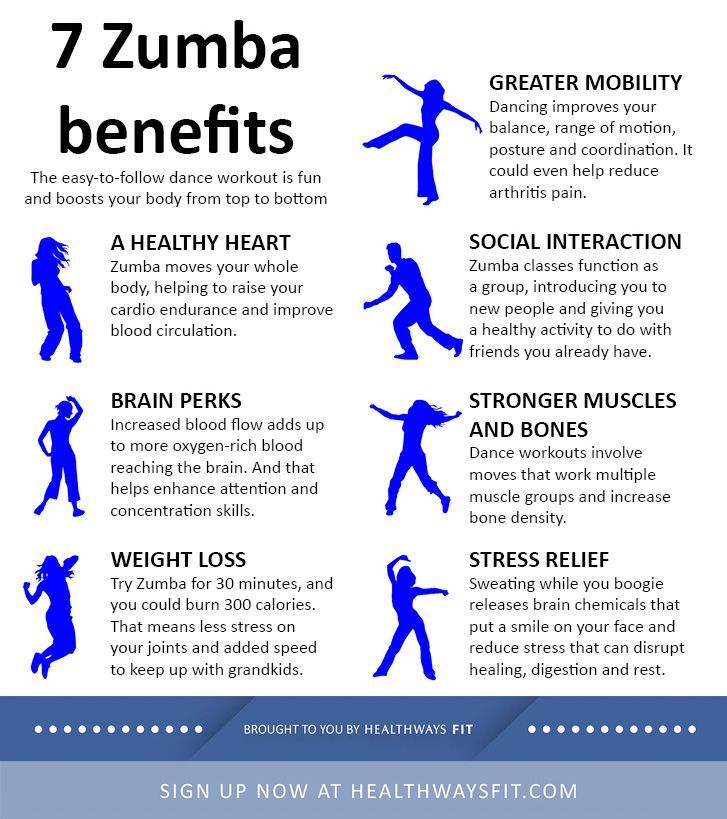 It’s more difficult, because without recommendations from more experienced dancers, unfortunately, it’s not so easy to find a good quality video on the net (I mean not the resolution quality, but the content itself).
It’s more difficult, because without recommendations from more experienced dancers, unfortunately, it’s not so easy to find a good quality video on the net (I mean not the resolution quality, but the content itself).
Meaningful video viewing is about building an understanding of HOW dancers make a particular impression on a partner or viewer. Technology is at the heart of everything. Understanding how the pros do it is a big step forward.
It is important to distinguish a show from a disco dance, a staged performance from an improvisation, a stylized dance from an authentic one, etc. Ask for recommendations and dance teachers will always throw off a couple of videos of worthy landmarks.
Tango Z. Showreel.
Online modern tango courses
Tango nuevo is the most advanced version of tango. We can quickly learn to dance from zero to a steep level.
| View details |
3. Dance in salsatecas/milongas/discotheques
A very delicate moment when it is worth coming to the first party.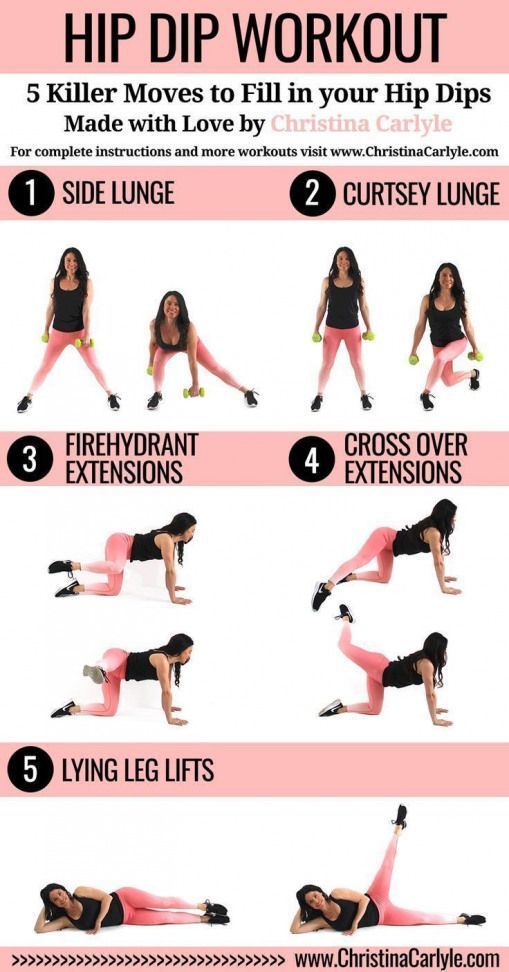 From a technical point of view, most students in 1-3 months have a sufficient set of figures and techniques to come and dance calmly. Psychologically, the same moment can be stretched out for an indefinite time. After all, it is imperative to “not lose face”, “learn more figures” and be sure what to do in case “there is an unfamiliar movement”.
From a technical point of view, most students in 1-3 months have a sufficient set of figures and techniques to come and dance calmly. Psychologically, the same moment can be stretched out for an indefinite time. After all, it is imperative to “not lose face”, “learn more figures” and be sure what to do in case “there is an unfamiliar movement”.
In fact, the partygoers don't really care (except for a small layer of non-professional teachers who want to help inexperienced dancers by treating them as customers in the future). It is important to come and try dancing after a month of classes. You can only with friends or guys from your group. This will be enough to feel the adrenaline and inspiration from the dance.
4. Dance with partners or partners not of your level
The conventional wisdom that you need to practice in groups of your level does not withstand the test of experience. Perhaps now your eyes widened in surprise, and you want to meaningfully read the phrase again. Yes, you saw everything correctly: when you dance with a partner of your level, you don’t grow anywhere.
Yes, you saw everything correctly: when you dance with a partner of your level, you don’t grow anywhere.
It's important to understand that not only does it work one way and you have to dance with cooler dancers, but it works even more effectively the other way. It is no coincidence that teaching pair dances dramatically raises the level of the teacher himself. You have an endless stream of very beginner dancers.
How it works. A more experienced partner needs to be "stretched". It's easy and obvious. With beginners, you need to take more initiative on yourself, see the general pattern of the dance more widely, turn on and insure more, try to be an example and be more careful. The quality of interaction begins to grow significantly. And wonderful partners too.
Dancing with partners of your level doesn't make you grow. Dance with beginners and more advanced dancers
Dominican Bachata Women's Style Online Course
Want to learn how to hypnotize those around you with the most appetizing part of your body? On the course we will tell you all the secrets.
| Interesting |
5. Learn to dance for a partner and for a partner
Turks and Argentines are one of the best partners in the world. In Russia, partners are highly valued. Why? The answer is simple. In Argentina and Turkey, it is not questionable for men to ask another man to lead in one piece or another and give feedback on the quality of the lead. For them, it will be a great shame to hear moralizing from a partner, or even more so to be known in the community as an insecure partner.
In Russia, due to the constant, often far-fetched, opinion that there are more women in pair dances, partners calmly get up and study their partner's part. Such partners then grow into very cool dancers and teachers. In no case do this at parties, only in class. Here we are talking only about the learning strategy. At parties, be yourself.
6. Do not memorize the links
Always try to look deeper and understand the through principle and idea of movement.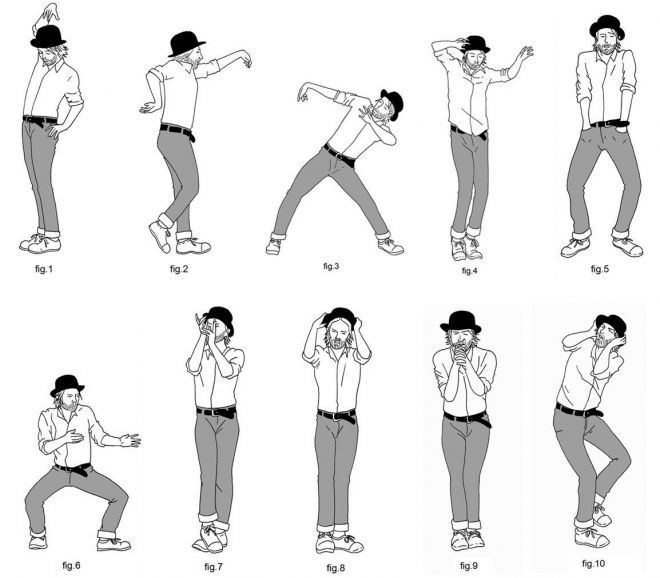 Understanding what and how is done will make it possible to independently generate any sequences and chips.
Understanding what and how is done will make it possible to independently generate any sequences and chips.
Human memory is limited and there will always be a moment when something will escape and your repertoire will be limited by the size of RAM.
In Argentine tango, for example, there are seven levels of movement construction that, when mastered, will allow you to make millions of combinations. And how many dance sequences can you really remember? In rueda, more than 150 figures dance in a rare circle. It's hard to keep more in mind.
7. Develop your body
Many years of experience in teaching partner dance shows that as soon as everyone pairs up in a class, any progress in individual style ends. But it is the individual style that distinguishes everyone at the disco: partners change, and style is always with you.
The body as the main instrument of dance must be very plastic, responsive and emotional. Surprisingly, not all pair dance schools have a general physical warm-up.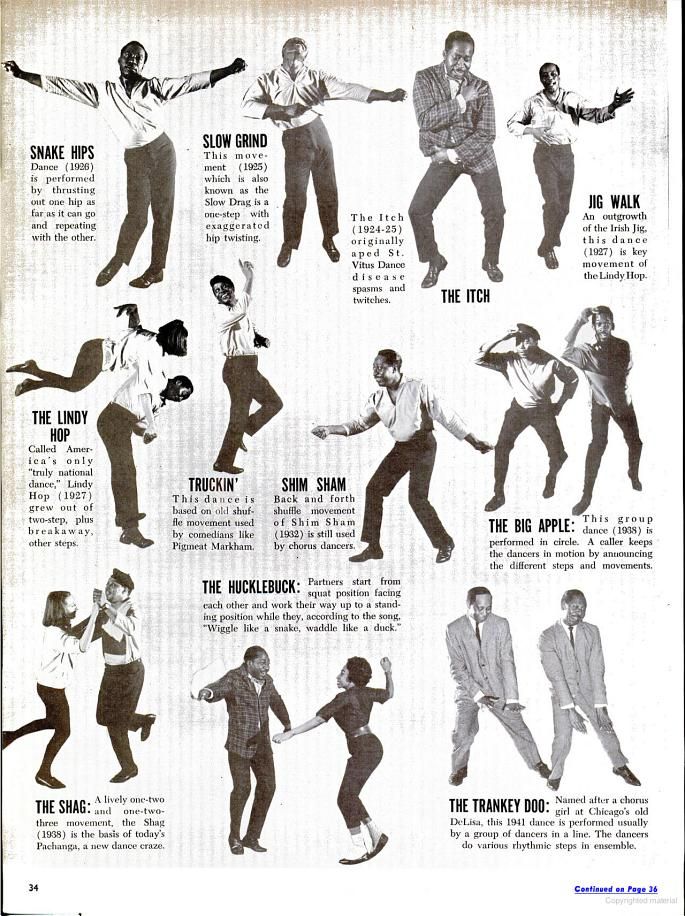 It is vital to tune the body and understand how it works.
It is vital to tune the body and understand how it works.
You can always train extra and concentrate more on the basic steps, as their true value is as body work. The sequence of steps is, in fact, the simplest thing that can be in pair dancing. The quality of individual performance determines the craftsmanship.
8. Try on the images of inspiring dancers
A psychological life hack for those who have already mastered the steps, but still feel that there is not enough brightness and drive. Most are terribly afraid of being someone else's "clone". Here the action is the same as under the influence of hypnosis - the more you resist, the more you plunge into an altered state of consciousness.
With a high degree of probability, you are already dancing like someone else's "clone". A meaningful fitting of someone else's image is that you mentally take the image of the one who inspires you (inspiration is critical in this case) and "put on" yourself. Then you start dancing and trying to feel in general how it is to be able, for example, to be the best partner or the sexiest partner in a disco. This is much more difficult than it seems. But it works extremely efficiently.
Then you start dancing and trying to feel in general how it is to be able, for example, to be the best partner or the sexiest partner in a disco. This is much more difficult than it seems. But it works extremely efficiently.
9. Dance to offbeat music
Habitual rhythms keep you tight. Tango salon or speedy timba leave little room for experimentation and fantasy. Pattern dancing is always noticeable and is reserved for beginners.
The truly new is born outside of the usual. Look for places to experiment. If there is no place, organize self-training. The main thing is not to get carried away, because music determines the style. We bring something new to pair dances, rather than trying to change them.
Search, improvise, don’t be afraid to go beyond, develop in different directions, be inspired by music atypical for the style
10. Try your hand at basic dance directions
dances exist according to their own non-choreographic laws.
This is the deepest delusion, which has turned into a ceiling for the qualitative development of partner dances. After all, all professional dancers, for example, in salsa or bachata, build their ideas on the basic choreographic principles.
Do not think that choreography is only applicable on stage. Any meaningful movement of the body can be choreographic. In general, try classical or modern choreography. Basically, hip-hop can work too.
11. Look for battle sensations
Pair dances return us to an active position of manifestation of our body. As in the days of our ancient ancestors, we impress the members of the opposite sex by how dexterous, hardy, sexy, etc. we are. Modern laws of the jungle in the entourage of big cities.
If you look around the dance floor, it becomes clear that the majority are clearly herbivores (not in the sense of vegetarians, but in relation to those around them).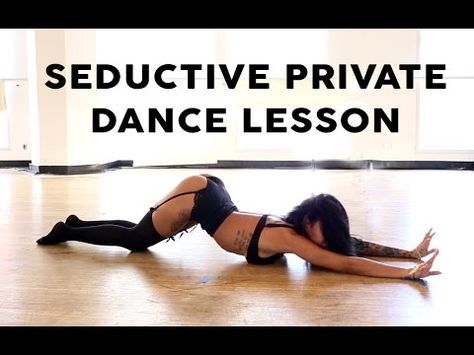 I am sure that predators are always more interesting in terms of the attractiveness of the image - try to find a counterbalance among herbivores, for example, a cat woman or a lion man.
I am sure that predators are always more interesting in terms of the attractiveness of the image - try to find a counterbalance among herbivores, for example, a cat woman or a lion man.
The conversation is about an internal position, not about aggressiveness. Lability and lack of control are inherent in adolescents, and not in adult self-sufficient people.
Accordingly, even a training or friendly battle gives, on the one hand, practical skills - to make a bright sequence of movements, bring an idea to a climax, show a spectacular feature, on the other hand, develops the psychological basis of the dance - self-confidence, resistance to extraneous attention, self-control and self-control in complex elements.
12. Communicate with professionals
The environment shapes the internal position. Basically, real passionaries of the dance community are ready to openly talk, discuss and support the development of dance in every possible way.
